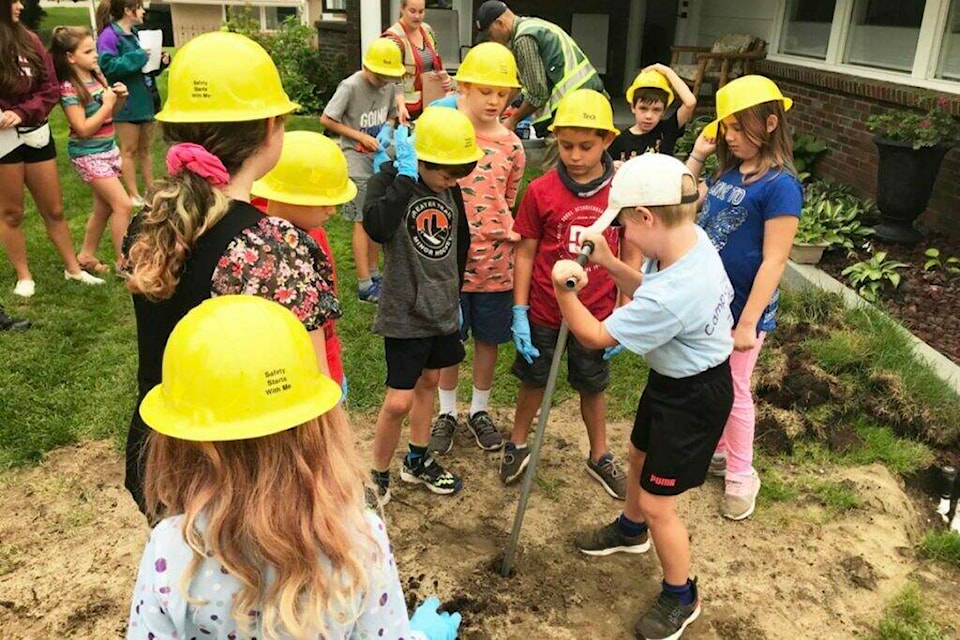Results from the 2022 children’s blood lead testing clinic show that the average blood lead level for children aged six months to three years in Trail and Rivervale is 2.3 micrograms per decilitre (µg/dL) — lower than results from the previous year.
The downward trend continues with the average remaining below 3.0 µg/dL in the past five years: 2.5 µg/dL in 2021; 2.3 µg/dL in 2020; 2.6 µg/dL in 2019; and 2.9 µg/dL in 2018.
While the participation rate at voluntary clinics declined during the pandemic, the program reports participation has improved since last year.
The Trail Area Health and Environment Program (THEP) continues its efforts to further reduce children’s blood lead levels.
Of note, program staff initiate support for all children at or above the serum lead threshold of 5ug/dL.
A recently approved strategic plan outlines ongoing measures to further reduce lead exposure in the community through air (fugitive dust reduction), soil remediation, and built environments (such as lead safe renovation).
As well, THEP continues to educate and promote healthy practices such as handwashing before eating, ensuring an iron rich diet and keeping floors dust-free.
Program staff also connect with other community groups to ensure messaging is shared and supports get to where they are needed.
Highlights from program actions this year include: soil samples from 165 properties with 36 properties receiving yard improvements; 63 healthy family visits; and 51 residents accessing the lead safe renovation program.
Managed by Teck Trail Operations, THEP’s Air Quality Program, reports that the 2022 year-to-date average for lead in community air is the lowest ever at 0.06 micrograms per cubic metre. Teck reports that lead in community air has consistently met this standard for the last two years.
Moreover, beginning this year, in the absence of Canadian air quality objectives or standards for lead, the program began comparing its community air results to the U.S. Environmental Protection Agency standard.
The ongoing decline on the local front shows real progress toward the ultimate goal which is, “no lead is good lead.”
Located at 1319 Bay Ave. in downtown Trail, THEP provides services in Trail and the surrounding areas in priority order.
Children’s blood lead levels in Trail have trended downward and air quality has continually improved since the early 1990s which is when the Trail Lead Task Force first began collaborating with the local community, Teck, the B.C. ministry of environment, and Interior Health.
In 2001, the lead task force established a select Trail city council committee called the Trail Area Health and Environment Committee. Presently, this committee includes representatives from: Trail council (2); Interior Health (2); Local 480 (1); Teck Trail Operations (2); B.C. ministry of environment (2); the community at-large (6); the regional district (2); and Warfield (1).
The greatest risk from lead exposure is during fetal and early childhood development because lead is toxic to the brain and nervous systems, even at low levels. It can impair cognitive and social development in children and affect fetal brain development before birth if an expectant mother is exposed to lead.
In adults, exposure to high levels of lead may cause anemia, weakness, and kidney and brain damage. Very high lead exposure can cause death.
Who is at risk?
Children under the age of five are most at risk of significant health effects and most likely to engage in behaviour that exposes them to lead, such as putting things in their mouth and crawling on the ground.
Individuals more likely to be exposed to lead are those who live in areas with industries such as mining or smelting (particularly people that directly work with lead, and their families), those who live in older and unrenovated homes, and those with hobbies that involve lead such as hunting or fishing.
